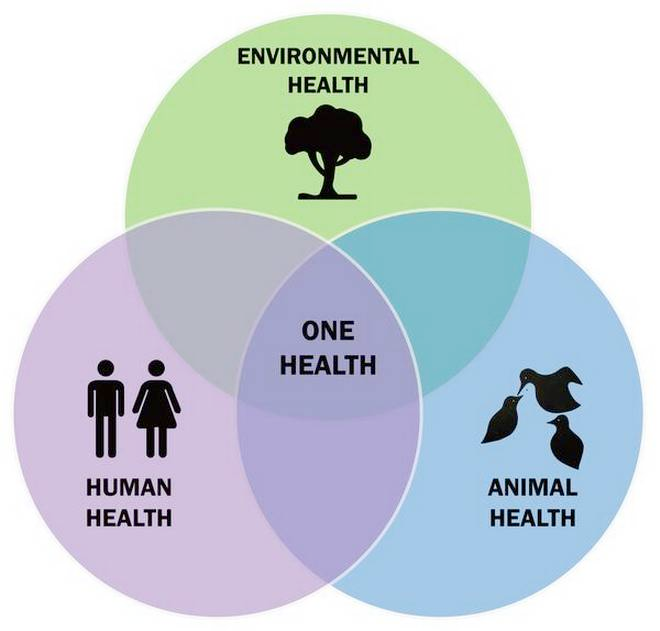Governance
One Health Concept
- 19 Oct 2022
- 5 min read
For Prelims: WHO, UNEP, WHO
For Mains: One Health Concept and its Significance
Why in News?
Recently, a new One Health Joint Plan of Action was launched by the Quadripartite-the Food and Agriculture Organization (FAO), the United Nations Environment Programme (UNEP), the World Health Organization (WHO), and the World Organisation for Animal Health (WOAH, founded as OIE).
- In April 2022 a pilot project in the state of Uttarakhand was launched to implement the One Health Framework by One Health Support Unit.
What is One Health Joint Plan of Action?
- About:
- The Action plan developed through a participatory process, provided a set of activities that aim to strengthen collaboration, communication, capacity building and coordination equally across all sectors responsible for addressing health concerns at the human-animal-plant-environment interface.
- The plan is valid from 2022-2026 and is aimed at mitigating the health challenges at global, regional, and country levels.
- Focus Areas of the Action Plan:
- One Health capacity for health systems
- Emerging and re-emerging zoonotic epidemics
- Endemic zoonotic
- Neglected tropical and vector-borne diseases
- Antimicrobial resistance and the environment
- Food safety risks
What is the One Health Concept?
- About:
- One Health is an approach that recognizes that the health of people is closely connected to the health of animals and our shared environment.
- One Health’ vision derives its blueprint from the agreement between the tripartite-plus alliance comprising the Food and Agriculture Organization of the United Nations (FAO), the World Organisation for Animal Health (OIE).
- It’s purpose is to encourage collaborations in research and sharing of knowledge at multiple levels across various disciplines like human health, animal health, plants, soil, environmental and ecosystem health in ways that improve, protect and defend the health of all species.
Why has the One Health Concept become more Important?
- Human Expansion: Human populations are growing and expanding into new geographic areas due to which close contact with animals and their environments provides more opportunities for diseases to pass between animals and people.
- Of the contagious diseases affecting humans, more than 65% are of zoonotic or animal to man origin.
- Environmental Disruptions: Disruptions in environmental conditions and habitats can provide new opportunities for diseases to pass to animals.
- International Travel & Trade: The movement of people, animals, and animal products has increased from international travel and trade due to which diseases can spread quickly across borders and around the globe.
- Viruses in Wildlife: Scientists have observed that there are more than 1.7 million viruses circulating in wildlife, and many of them are likely to be zoonotic.
- This implies that unless there is timely detection, India risks facing many more pandemics in times to come.
Way Forward
- The Covid-19 pandemic showed the relevance of 'One Health' principles in the governance of infectious diseases, especially efforts to prevent and contain zoonotic diseases throughout the world.
- India needs to scale up such a model across the country and to establish meaningful research collaborations across the world.
- There is a need to develop best-practice guidelines for informal market and slaughterhouse operation (e.g., inspections, disease prevalence assessments), and creating mechanisms to operationalise ‘One Health’ at every stage down to the village level.
- Awareness generation, and increased investments toward meeting ‘One Health’ targets is the need of the hour.







